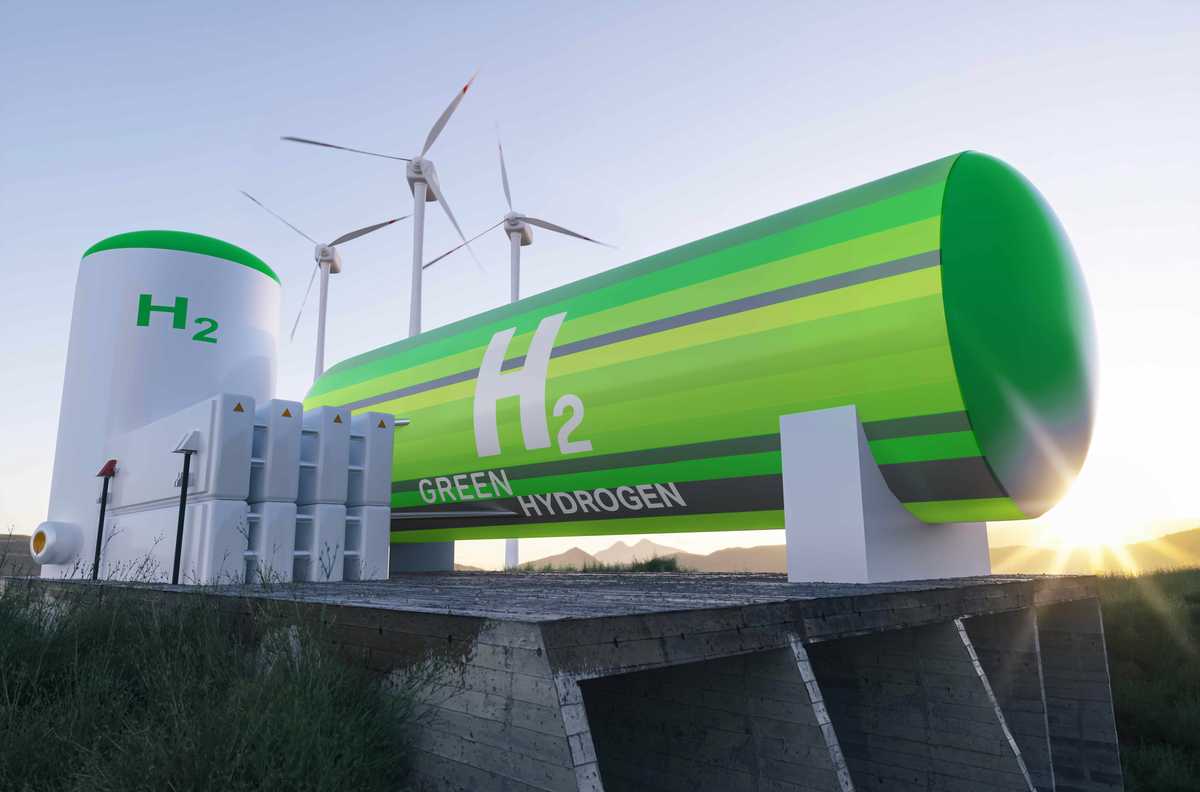EC's list of common and mutual interest projects now includes hydrogen
For the first time, the European Commission has included hydrogen and electrolyser projects in its list of projects that help achieve the European Green Deal goals.
 PHOTO: Concept of a green hydrogen production facility. Getty Images
PHOTO: Concept of a green hydrogen production facility. Getty Images
The European Commission (EC) selected 166 infrastructure projects that will help the EU achieve its energy and climate policy goals while ending support for fossil fuel infrastructure.
The projects are categorised as projects of common interest (PCIs) or projects of mutual interest (PMIs). The PCI category, launched in 2013, covers projects within the EU. The PMI covers cross-border projects between EU and non-EU countries. It was launched after the revision of the Trans-European Networks for Energy Regulation (TEN-E) in 2022.
Among these, the Commission identified 65 hydrogen infrastructure and electrolyser projects as “part of the EU's efforts to establish a hydrogen market in Europe and globally," the EC explained.
“These will enable the export and transit flows of renewable hydrogen to neighbouring Member States and allow major industries to decarbonise and stay in the EU,” Kadri Simson, European Commissioner for Energy said.
The EC's submitted list will now be reviewed by the European Parliament and Council. Both legislative bodies have two months to approve or reject the list, which can be extended by two more months. The list, however, cannot be amended.
If approved, these projects will benefit from streamlined permit and regulatory processes and be eligible for EU funding. The streamlined processes and access to funding can significantly accelerate the development and deployment of these crucial infrastructure projects, contributing to the EU's energy and climate policy objectives.
More work needed despite significant progress – Hydrogen Europe
‘’The inclusion of hydrogen projects for the first time in a PCI list is a major step forward and shows Europe’s commitment to lay the foundation of a European hydrogen backbone,” Daniel Fraile, chief policy officer at Hydrogen Europe.
Hydrogen Europe is a European non-profit that represents European companies and climate activists promoting hydrogen as a renewable energy resource.
It further explains that the EC selected only 65 projects from 179 applicants. It indicates that many of these projects are in their infancy and do not meet eligibility criteria due to their reliance on natural gas. Moreover, most of the selected projects are located in Western Europe, illustrating a "significant geographical imbalance". The list included only two offshore pipeline projects.
“This first selection process is also a valuable lesson learnt. We will be working with our members to ensure the next list includes more diversified projects (both type wise and geographically),” Fraile added.
The non-profit also argued that only seven underground hydrogen storage facilities were selected, indicating the need for more research and development of storage projects.
Hydrogen Europe underlined the need for “solid financing schemes and accelerated planning procedures” to boost investor confidence in hydrogen infrastructure projects.
A green hydrogen-led energy transition
Maroš Šefčovič, European Commission’s executive vice-president for European Green Deal, Interinstitutional Relations and Foresight called hydrogen the “missing link” in the continent’s clean energy transition at European Hydrogen Week.
“It is an important first step to bridge the cost gap between renewable hydrogen and fossil fuels,” he said. “Furthermore, we need to work together if we are to overcome the often cited chicken and egg problem. As long as there isn't sufficient hydrogen supply, there won't be demand from customers, and vice versa.”
In light of this, he confirmed that the EU will focus on increasing investments and transparency to strengthen the green hydrogen market.
By Konica Bhatt
Please get in touch with comments or additional info to news@engine.online






